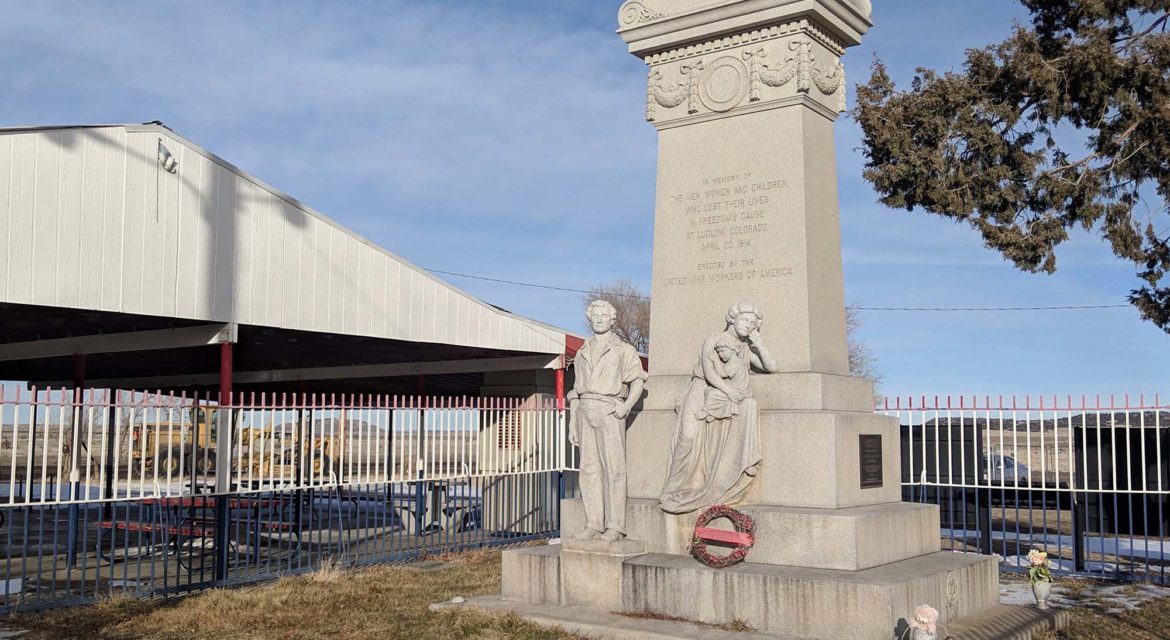 The Ludlow Monument honors the victims of the Ludlow Massacre that took place in 1914. Located near Ludlow, Colorado, it was erected by the United Mine Workers of America (UMWA) to honor the memory of those who perished, but also provides a place for the community to gather. The combination demonstrates the power of monuments to actively engage their communities while also cultivating an incredibly profound legacy.
The Ludlow Monument honors the victims of the Ludlow Massacre that took place in 1914. Located near Ludlow, Colorado, it was erected by the United Mine Workers of America (UMWA) to honor the memory of those who perished, but also provides a place for the community to gather. The combination demonstrates the power of monuments to actively engage their communities while also cultivating an incredibly profound legacy.

Remembering the Ludlow Massacre
At the current site of the Ludlow Monument, coal miners in the Colorado counties of Las Animas and Huerfano went on strike in September of 1913 over unsafe work conditions and low pay. These miners were eventually evicted from nearby company towns by industrialist John D. Rockefeller’s Colorado Fuel and Iron Company. This act forced the striking miners to constructed tent colonies, the largest of which housed about 1,200 strikers, in Ludlow.
 The Colorado National Guard was eventually deployed help reduce the violence between armed strikers and the company-hired detectives. On Sunday, April 19, 1914, the National Guard opened fire on the camp, killing approximately twenty-one people, including miners’ wives and children. The exact circumstances that caused the Guard to open fire are still debated, but it has been described as the “deadliest strike in the history of the United States”.
The Colorado National Guard was eventually deployed help reduce the violence between armed strikers and the company-hired detectives. On Sunday, April 19, 1914, the National Guard opened fire on the camp, killing approximately twenty-one people, including miners’ wives and children. The exact circumstances that caused the Guard to open fire are still debated, but it has been described as the “deadliest strike in the history of the United States”.
As many as 50 people died during the reaction to the Ludlow Massacre, but the strike was finally ended in December of 1914 without any meaningful improvements to pay or working conditions for the miners. Nonetheless, the UMWA gained over 4,000 new members, and it proved to be the seminal event in the Colorado Coal Wars that would eventually see the coal mining industry unionize.
The UMWA bought the 40 acres surrounding the site of the Ludlow colony before 1916 and dedicated the Ludlow Monument in 1918. Today, plaques surround the monument and illustrate various pieces of history associated with the Ludlow Massacre. That includes testimonials & memories, records of archeological efforts and the history of the UMWA. However, all of this is just part of what the audiences can engage with at the Ludlow Monument.

A Place for the Community to Gather
 For many years, UMWA leaders gathered at the Ludlow Monument to remind everyone of the atrocities that had to be endured to enable the benefits that members could now enjoy. That sense of community and gathering continues to this day, with a pavilion and tables to facilitate events and get-togethers of all types. It’s a distinct feature that sets the Ludlow Memorial apart from other memorials that do not compel this sense of community. Memorials that do provide this kind of active engagement have proven to resonate with and for their communities.
For many years, UMWA leaders gathered at the Ludlow Monument to remind everyone of the atrocities that had to be endured to enable the benefits that members could now enjoy. That sense of community and gathering continues to this day, with a pavilion and tables to facilitate events and get-togethers of all types. It’s a distinct feature that sets the Ludlow Memorial apart from other memorials that do not compel this sense of community. Memorials that do provide this kind of active engagement have proven to resonate with and for their communities.
The memories and history associated with the Ludlow Monument are actively displayed throughout the site in a way that few memorials showcase. By highlighting this history, the Ludlow Monument creates experiences for a visitor that connects them to this history and compels them to engage with it in an especially powerful manner.
By highlighting the legacy of those who fought and died in the strike, visitors and the community as a whole can appreciate what happened at Ludlow in a totally new way. It has enabled experiences that are serving to enable a legacy for the community that is about the past just as much as it is about the future.

A Legacy for the Past and Present of Colorado
 Memorials often honor the past at the expense of the present, and the Ludlow Monument is a great example of what it means to celebrate history while also actively engaging with it. By enabling the community in the present to understand and interact with this history, the Ludlow Monument has ensured that the communities of the future will also be able to engage with and build upon this legacy.
Memorials often honor the past at the expense of the present, and the Ludlow Monument is a great example of what it means to celebrate history while also actively engaging with it. By enabling the community in the present to understand and interact with this history, the Ludlow Monument has ensured that the communities of the future will also be able to engage with and build upon this legacy.

